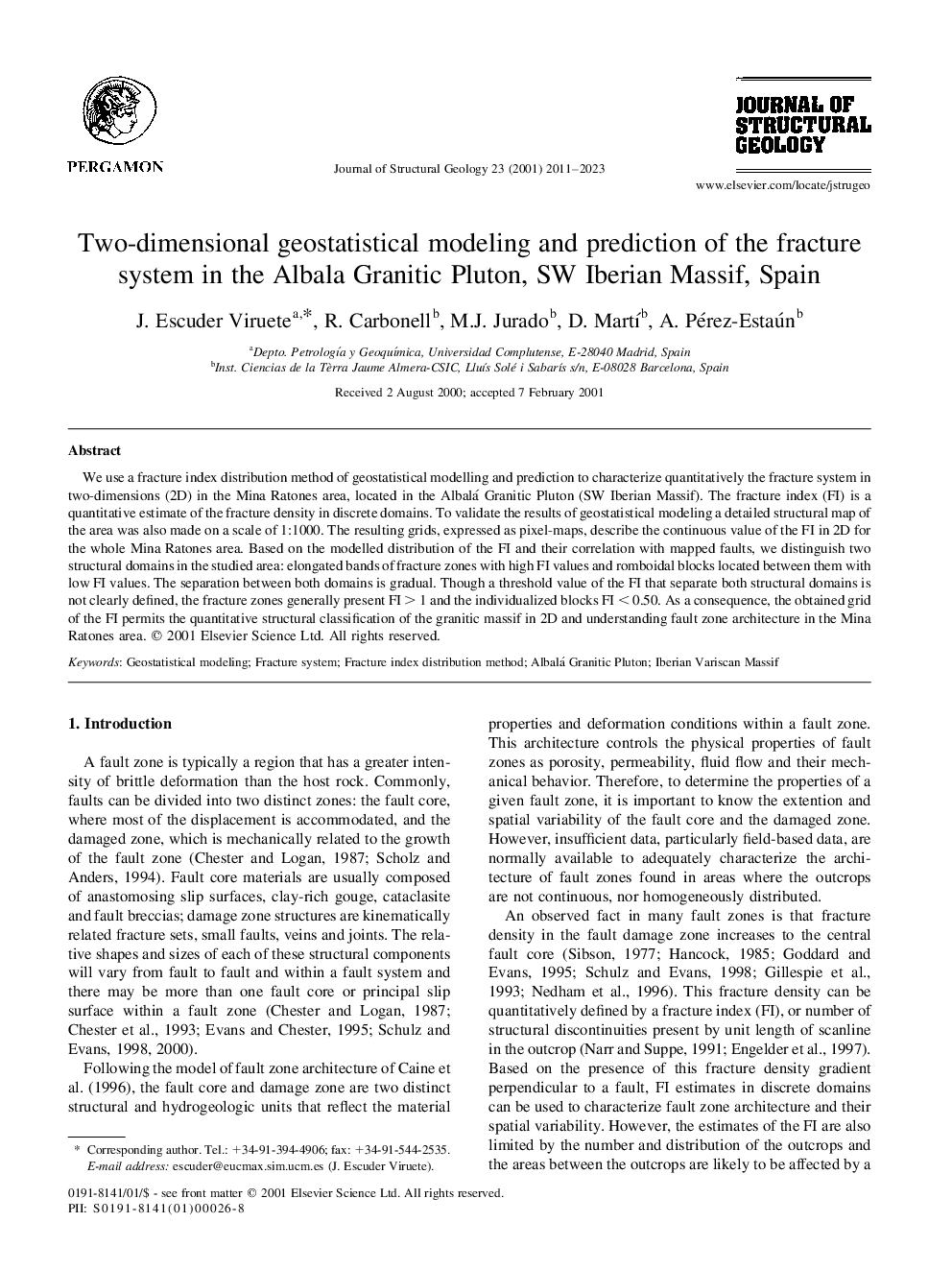| Article ID | Journal | Published Year | Pages | File Type |
|---|---|---|---|---|
| 4734552 | Journal of Structural Geology | 2011 | 13 Pages |
We use a fracture index distribution method of geostatistical modelling and prediction to characterize quantitatively the fracture system in two-dimensions (2D) in the Mina Ratones area, located in the Albalá Granitic Pluton (SW Iberian Massif). The fracture index (FI) is a quantitative estimate of the fracture density in discrete domains. To validate the results of geostatistical modeling a detailed structural map of the area was also made on a scale of 1:1000. The resulting grids, expressed as pixel-maps, describe the continuous value of the FI in 2D for the whole Mina Ratones area. Based on the modelled distribution of the FI and their correlation with mapped faults, we distinguish two structural domains in the studied area: elongated bands of fracture zones with high FI values and romboidal blocks located between them with low FI values. The separation between both domains is gradual. Though a threshold value of the FI that separate both structural domains is not clearly defined, the fracture zones generally present FI>1 and the individualized blocks FI<0.50. As a consequence, the obtained grid of the FI permits the quantitative structural classification of the granitic massif in 2D and understanding fault zone architecture in the Mina Ratones area.
